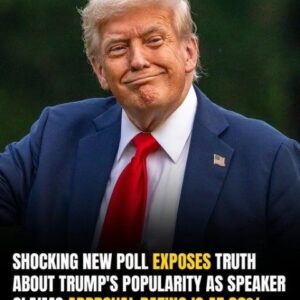After several weeks of decline, former President Donald Trump’s approval rating among millennials has seen a noticeable rebound, according to a recent poll released Tuesday by The Economist and YouGov.
Throughout his political career, Trump has consistently emphasized poll results and public approval, often referencing them during public appearances and campaign rallies. While fluctuating poll numbers are common, changes in approval ratings can have implications for political momentum—especially with the 2026 midterm elections on the horizon.
When Trump returned to the White House in January, his approval numbers were relatively strong. However, they dipped slightly in some surveys due to concerns about ongoing economic and policy debates, including reactions to his trade and tariff measures.
In an effort to engage younger voters, both Trump and former Vice President Kamala Harris have turned to digital outreach—including podcasts and social media—as part of their broader campaign strategy. Millennials, typically defined as individuals born between 1981 and 1996, now represent the largest age-based voting demographic in the U.S., according to the Pew Research Center.
The new survey, conducted from June 27 to June 30 among 1,648 U.S. adults, shows a 42% approval rating for Trump among millennial respondents, with a margin of error of ±3.3%. This marks a 6-point increase from the previous week’s poll (June 20–23), which showed a 36% approval rating.
At the start of his second term, Trump’s approval among millennials stood at 44%, with peak ratings reaching 48% in polls conducted earlier this year.
“The recent data suggests a measurable increase in support from millennials, who are now a critical part of the electorate,” said Craig Agranoff, a political analyst, in an interview with Newsweek. “While this is a positive sign for the Trump campaign, it’s important to remember that millennials are a diverse group, often weighing a variety of issues beyond party affiliation.”
Agranoff added that the rise could be attributed to economic sentiment or more effective communication strategies, but cautioned against viewing the shift as permanent. “Historically, President Trump has focused more on energizing his existing base than tailoring his message specifically to younger voters, but this recent shift suggests growing interest among that group.”
Looking ahead, experts say Trump’s approval among millennials could continue to fluctuate in response to evolving domestic and international developments, as well as campaign efforts from both parties. Analysts also predict that digital-first outreach methods, such as podcasts and social media series, will play an increasingly important role in future election cycles.
Recent polling from Marquette University also found 66% of respondents expressed approval for the administration’s current approach to immigration enforcement. This comes following several high-profile deportation cases and policy updates.
Another poll from Quantus, conducted in May, showed an even split among voters: 48% approved of the president’s overall performance, while 48% disapproved. These results suggest that, while the political landscape remains divided, shifts in public opinion are still possible across various voter groups.
The Department of Homeland Security recently announced a voluntary return program, offering to fund commercial flights and provide stipends to individuals who opt to return to their home countries. Officials say the initiative is designed to manage resources more efficiently while giving individuals additional options under current immigration guidelines.
As campaigns look toward 2026 and beyond, engagement with millennial voters remains a top priority for both parties. With changing media habits and evolving priorities, political figures are adapting their strategies to reach this influential generation in new ways.





